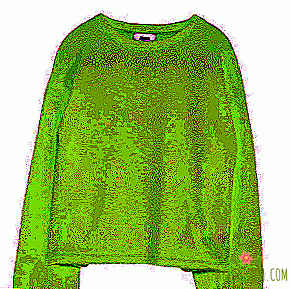On steroids: How dope works
Because of the outbreak of doping scandal Russian athletes will be able to participate in the Olympics only under a neutral flag. While others argue whether the “political conspiracy against Russia” was the cause and whether it was humiliating to act in neutral status, we decided to figure out what doping is, why and how it is used and how it is fought, along with experts: a nutritionist, a member International Association of Sports Sciences (ISSA) Leonid Ostapenko and candidate of medical sciences, general practitioner, cardiologist Yaroslav Ashikhmin.

What is dope
In general, doping is any chemical substances that help to improve the result in sports. Which ones depends on the sport and the characteristics of the athlete, but it is not difficult to guess that most often these are drugs that increase strength or endurance, help muscles recover faster or promote concentration and speed of reaction. At a deeper (cellular or molecular) level, these agents can, for example, stimulate muscle protein synthesis or improve the transport of oxygen by blood cells.
According to Leonid Ostapenko, there are precedents when they recognized by doping a stay in the highlands before the start of the competition: being in thin air dramatically increases the number of red blood cells in the blood, and hence their ability to carry oxygen, which significantly improves endurance. The choice of specific means depends on the sport, on the athlete’s weak points, and on how his body reacts to a particular drug. Therefore, it is absurd to assume that, for example, the entire basketball or football team used the same substance - this is at least impractical.
On the other hand, doping is a real thing, primarily because of the highest requirements for athletes. The border between the season and the interseason has almost disappeared: the whole year becomes a competitive period. Ostapenko notes that gigantic money is being invested in sport, which must be returned, and cynicism is obvious: health, dignity and honesty of athletes are thrown into the firebox of financial interests, since it is simply impossible to withstand such demands on the body's natural resources.
Why is it forbidden
The use of doping is unethical - it violates the initial equality of the conditions in which the athletes are located. It's a shame when one achieved endurance only by training, and the other took a drug that increases the number of red blood cells. On the other hand, in professional sports an important role is played by innate qualities, genetic uniqueness; and in general, the organism of each person is different from the other, and we are not talking about absolutely equal initial conditions. Nevertheless, in an effort to make athletes "clean" the list of illicit drugs is constantly expanding - but they are being replaced by new ones.
Until about the mid-seventies, even steroids were absent in the dope list - those very “anabolics” that even a child now knows about the harm and illegality. Although the recognition of Arnold Schwarzenegger in the use of steroids at an early stage of a bodybuilding career was perceived by many as scandalous, at that time it was legitimate and perfectly normal to discuss steroid schemes out loud. Leonid Ostapenko notes that steroids are really an excellent means of recovery, because intense sports and competitive loads at a certain stage lead to a decrease in the production of sex hormones. Therefore, when these drugs were resolved, they were initially used for substitution therapy after the competition.
But, of course, the obvious positive effect of steroids quickly led to abuse, and already in the eighties the doses used repeatedly outgrew the amount produced by the body itself. The risk of side effects has become much higher than the benefits. Steroids banned - and athletes took on other hormones, such as growth hormone and insulin; after the ban, and these substances in the course went the other, and this process has no limit. There is no unambiguous solution either.

Why is it so difficult to “clear” the sport from doping
If illicit drugs are used, then it is clear that they will try to shelter them from the doping control. When urine samples were taken at pre-known moments, it was relatively simple: the drug was stopped to be administered at a certain time before analysis, in order to remove it from the body. The diuretics helped to speed up this process, although they were also banned. An unequivocal situation can not be called: the same diuretic may be necessary for an athlete not to disguise prohibited drugs, but for other reasons. The so-called medical exemptions are also a separate story, because if there is a certificate from a doctor, some illegal drugs become allowed. On the other hand, as Yaroslav Ashikhmin explains, the list of exceptions is very limited, and the drugs in it include relatively weak ones.
The analytical process itself, which detects doping in the urine or blood, is very complex, and even the most advanced mass spectrometry methods can only find molecules whose existence is already known. Therefore, such a concept as “designer” steroids appeared - these are molecules with a new structure, the mass of which does not coincide with the molecular weight of the already known ones. To identify such a substance in the blood is almost impossible, because no one is looking for it. But the doping control is also being improved: now metabolites are detected in the blood, that is, by-products of the same steroids or other drugs.
How control is improved now
Today, WADA (World Anti-Doping Agency) uses the so-called biological passports of athletes. Such a passport is an electronic document where the results of the analyzes are entered regularly. This allows for a long time to track the parameters, changes which can indirectly indicate the use of doping. Now the biological passport consists of two modules: hematological (that is, it reflects the parameters of the blood itself, its cells) and the steroid, which records indicators of the metabolism of steroid hormones. If at some point the derivatives of steroids become more, then, most likely, these drugs were administered from the outside. The taking of blood or urine samples for analysis can be not only planned, but also selective: WADA representatives can “pull out” any athlete and subject it to testing at any time.
According to Yaroslav Ashikhmin, thanks to steroid passports, it has become much easier to detect the use of steroids, so the use of new “designer” molecules has become less. Now the biological passport contains hematological and steroid parts, but if you wish, you can apply the same principle to many other parameters, regularly perform blood tests for a huge number of metabolites and record the results in passports. If the task is to make everyone speak as honestly as possible, then you need to continue to expand the list of prohibited drugs and regularly conduct analyzes. At the same time, the "white list" of drugs that can be used in case of illness and to simplify preparation would be much simpler.

Are rumors true about doping
Like everything forbidden or balancing on the verge of breaking the law, dope has generated many rumors. Rumor has it that in children's sports schools anabolics slip students under the guise of vitamins, and gymnasts allegedly practice getting pregnant before competitions to perform at the peak of athletic efficiency in the first trimester, and then have an abortion. Leonid Ostapenko believes that these rumors are unfounded: "The use of certain substances in children's schools can be revealed by elementary blood tests, and this is the basis for prosecuting the person who recommended them." In addition, the earlier a person begins to use doping, the shorter his career becomes: the natural process of the formation of physical qualities is disturbed and any competent trainer must understand this.
Rumors about “planned” pregnancies and abortions appeared after the fall of the Berlin Wall: then “exposing atrocities” began in the GDR and there was talk that the athletes were subjected to such a “procedure”. The authenticity of these facts cannot be confirmed or disproved, but one thing can be said: the effect of pregnancy is not so predictable and depends heavily on the hormonal profile of a particular woman. Some in the first trimester of pregnancy really have a peak of endurance and strength, while others are endlessly unwell and are not capable of serious activity.
What awaits us in the future
The fight against doping is a complex ethical and philosophical question. You can bring to the absurd the list of illicit drugs, but there will always be a "gray zone" in the form of funds that are allowed for medical reasons. If we ban them, then it turns out that only absolutely healthy people can perform - and this is discrimination. It is possible to designate permissible upper and lower bounds for substances recognized by doping, but this is not always true, because the metabolism is different for everyone. The “allowed” concentration at the time of the competition may not always indicate a lack of doping.
Much depends on how we treat sports in general, including at the political level. It’s one thing to want competitions to be as clean as possible and encourage people to take physical activity, it’s quite another when it comes to increasing the competitive power of countries, like nuclear, only sports. In this case, you can be sure that the use of gene doping is not far off - “improving” the future physical qualities of embryos; then superpowers will compete for superpowers.
Photo:Fisher Photostudio - stock.adobe.com (1, 2, 3)





